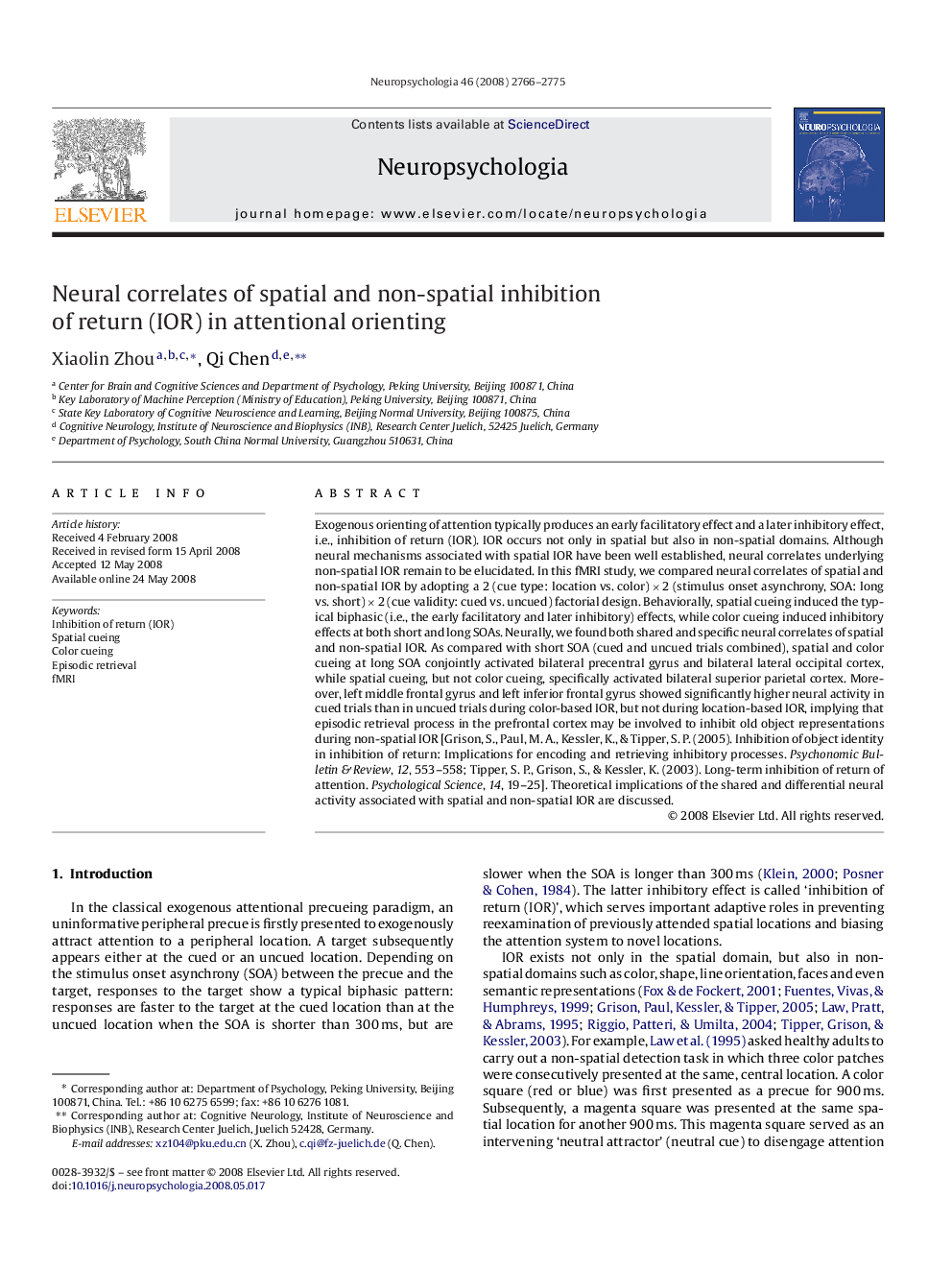| Article ID | Journal | Published Year | Pages | File Type |
|---|---|---|---|---|
| 945362 | Neuropsychologia | 2008 | 10 Pages |
Exogenous orienting of attention typically produces an early facilitatory effect and a later inhibitory effect, i.e., inhibition of return (IOR). IOR occurs not only in spatial but also in non-spatial domains. Although neural mechanisms associated with spatial IOR have been well established, neural correlates underlying non-spatial IOR remain to be elucidated. In this fMRI study, we compared neural correlates of spatial and non-spatial IOR by adopting a 2 (cue type: location vs. color) × 2 (stimulus onset asynchrony, SOA: long vs. short) × 2 (cue validity: cued vs. uncued) factorial design. Behaviorally, spatial cueing induced the typical biphasic (i.e., the early facilitatory and later inhibitory) effects, while color cueing induced inhibitory effects at both short and long SOAs. Neurally, we found both shared and specific neural correlates of spatial and non-spatial IOR. As compared with short SOA (cued and uncued trials combined), spatial and color cueing at long SOA conjointly activated bilateral precentral gyrus and bilateral lateral occipital cortex, while spatial cueing, but not color cueing, specifically activated bilateral superior parietal cortex. Moreover, left middle frontal gyrus and left inferior frontal gyrus showed significantly higher neural activity in cued trials than in uncued trials during color-based IOR, but not during location-based IOR, implying that episodic retrieval process in the prefrontal cortex may be involved to inhibit old object representations during non-spatial IOR [Grison, S., Paul, M. A., Kessler, K., & Tipper, S. P. (2005). Inhibition of object identity in inhibition of return: Implications for encoding and retrieving inhibitory processes. Psychonomic Bulletin & Review, 12, 553–558; Tipper, S. P., Grison, S., & Kessler, K. (2003). Long-term inhibition of return of attention. Psychological Science, 14, 19–25]. Theoretical implications of the shared and differential neural activity associated with spatial and non-spatial IOR are discussed.
